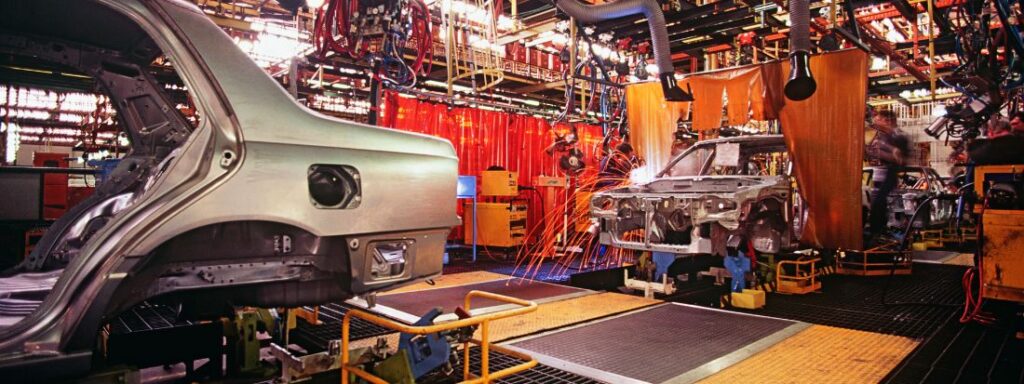
Technology revolution is the biggest transformation that has been happening in recent years. It is giving variety of options and new ways of doing things. Manufacturing is one of the industries that has been completely transformed by digital technologies.
As part of the technological revolution, shop floor digital transformation in manufacturing refers to incorporating digital technologies into production systems. The digital transformation is already making a difference in the global economies. For example, digital transformation generated $101.69 billion in 2020. It is projected to reach 337.10 billion in the year 2028.
There are many debates making rounds about shop floor digital transformation. There are claims that shop floor digital transformation is just a hype. However, the statistics on revenue generated by this transformation speaks volumes. Giant companies have adopted the technologies and are making a major difference.
For instance, machine breakdown causes great loses to manufacturers. $2 billion is lost yearly to resource wastage between turnovers. Shop floor digital transformation reduce resource wastage from unexpected downtime.
Shop floor digital transformation will benefit your manufacturing industry in the following ways.
The Internet of Things is achieving more digital connectivity on shop floors. Huge amounts of data can now be shared between equipment and managers in real-time. This improves informed decision-making. Shop floor digital transformation improves connectivity between employees’ operations, equipment, inventory, and customers.
Shop floor digitization transformation is focused on achieving smart operations. Smart operation replaces human services by far with digital technologies. Traditional operation methods are loaded with a lot of errors. Smart technologies like Artificial intelligence, 3D surveillance, and digital sensors improve production.
A shop floor digital transformation forms a basis of production that cannot be overtaken by pandemic lockdowns. By replacing most of the human services, smart technologies develop uninterrupted systems. They can remain in production with minimal physical human input.
Physical management of the shop floor leads to increased human error. Digital transformation in shop floors reduces human handling. This reduces human errors.
Communication is the basis of production in smart factories. Incorporating the machines and humans in a single platform improves communication therein. Managers can now communicate with the machine and make commands remotely
Manufacturing industries contribute 20% to global emissions production. However, reducing resource spoilage reduces global pollution. The closed-loop production cycle of materials creates close linkages between material and pollution. Many people consider smart technologies as agents of change in pollution control
You could be wondering how you can get started with the shop floor digital transformation? It may feel overwhelming to manage the interconnectivity with these technologies. However, it is achievable, and it can be done. The following are feasible basics of shop floor digital transformation.
The idea of shop floor digital transformation is partly psychological. You need to change your attitude from traditional methodologies. Break the data silos and encourage data sharing. Invest in digital infrastructure that centralizes your communication in the production facility.
For instance, cloud servers offer the best opportunities for centralization and sharing of data. Invest in affordable hosting services where all your actors communicate in one mouthpiece. Engage communication between human actors with machines through leverageable data-sharing technologies.
It is impossible to achieve shop floor digital transformation with many physical human inputs in the value chain. Replacing these services with smart technologies reduces reliance on human hands. This reduces human errors and improves efficiency.
In addition, production can remain steady with the automation of processes. Digital sensors and artificial intelligence improve resource management. Smart technologies reduce the wait time and unprecedented breakdowns. It increases the uptime of machines leading to meeting deadlines in order deliveries.
Digital transformation of shop floors involves the production of huge amounts of data. Therefore, companies must have the infrastructure to leverage the data and make it available to managers. Data storage and management are the basics of the shop for transformation.
For instance, Cloud servers provide a huge opportunity to store huge amounts of data. They make it available anytime and from any location. Through remote data accessibility, managers can manage shop floors any from the location. These robust systems cushion industries from lockdown like those caused by Covid. Production lines can remain in operation with commands done from remote sources.
Shop floor digital transformation emphasizes interconnectivity. It brings the aspects of business management in a manufacturing setup. Shop floor transformation seeks to increase the connectivity in order placing, machine performance and operations management.
Therefore, developing a platform for managing this interconnectivity is the basis of the transformation. The analytics dashboard provides for the business and machine linkages. They are central analytical centers where managers can manage orders and machine performance.
Linkages are the core goals of shop floor digital transformation. It aims to improve the efficiency of operations. The goal of every business is to increase the return with reduced costs. Therefore, optimization of efficiency is the basis of every shop floor transformation.
Thus, incorporation of the Industry 4.0 infrastructure helps in improving efficiency. These are artificial intelligence, automation, the Internet of things, and digital sensors. These technologies reduce material wastage and optimize production.
To remain competitive, both giant and SME entities need to adopt shop floor digital transformation. The leading giant companies in smart technologies are already creating differences. The debate on the digital transformation of the shop floor remains. However, statistics on the revenue generation of smart technologies clears up the misconception. Shop floor digital transformation is creating a competitive advantage over businesses. SMEs can choose to invest low and scale their adoption of digital transformation. Resisting change will only make you absolute. There are a variety of service providers offering customized smart technologies. You can obtain a tailor-made solution for your manufacturing unit.
Fill in your details and we will get back to you shortly.